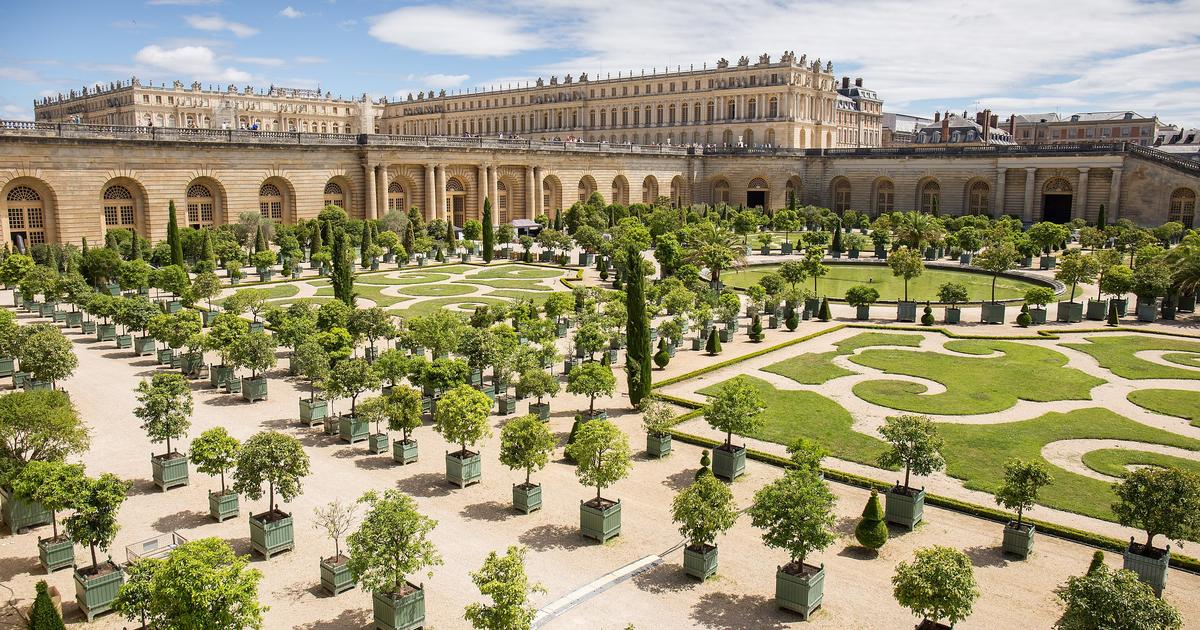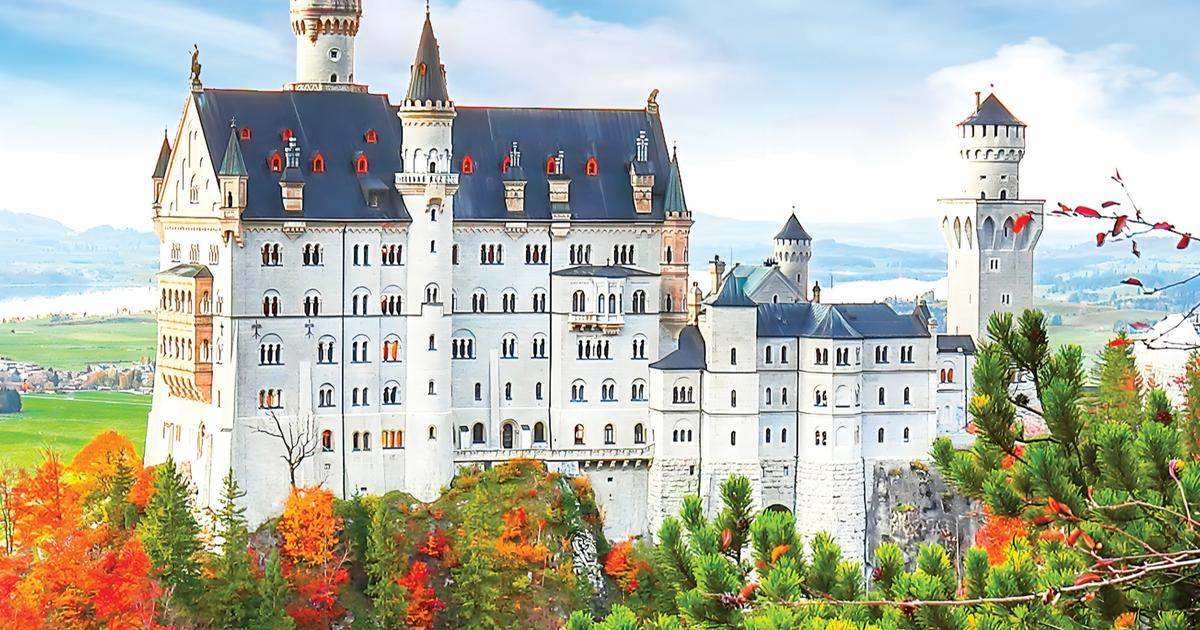From the banks of the Loire to the borders of the Carpathians, castles have sprung up all over Europe, as testimonies of a past that is both prestigious and tormented.
To discover
- Podcast Elsewhere: Singapore's hidden surprises and treasures
- Stays in France: weekends, hotels and tailor-made stays from our partners
Each building has gone through history, escaping revolutions and wars. All are now open to visitors. The opportunity to relive the great hours of medieval times and the Renaissance, in the footsteps of Louis XIV, Catherine de Medici, Ludwig II of Bavaria and Sissi the Empress.
See alsoEleven of the most beautiful castles in France
1. Palace of Versailles (France): the most monumental
The Palace of Versailles welcomes more than 7 million visitors each year. Jorge Lascar
Erected by order of Louis XIV in 1623, the Palace of Versailles is the largest castle in the world, with 2300 rooms and more than 63,000 m². The sumptuous building embodies the grandeur of the French monarchy by deploying sumptuous architecture. Visitors flock to the Hall of Mirrors and the King's Chamber while the French gardens reveal a grandiose perspective on the Grand Canal, nearly 1700 meters long.
See also
Do not miss the exotic Orangerie, below the castle. Some of the trees preserved here are over 200 years old.
See alsoHow to discover Versailles
2. Château de Chenonceau (France): the most daring
The succession of female owners earned the Château de Chenonceau the nickname "Château des Dames". FranceIntense / Pixabay
Built in the early sixteenth century, the castle of Chenonceau was transformed by Catherine de Medici who commissioned the realization of a gallery forming an unlikely bridge over the Cher. A unique architecture! The sovereign also supervised the layout of the magnificent French gardens. The castle also has a very beautiful collection of works of art, furniture and tapestries of the sixteenth century.
See also
Lose yourself in the labyrinth imagined by Catherine de Medici. The set consists of more than 2000 yew trees aligned on more than one hectare.
Read alsoWhich castles of the Loire must you absolutely visit?
3. Château de Chambord (France): the most inventive
More than 60 rooms of the castle of Chambord are open to visits, out of a total of 440 rooms. W. Bulach
Stronghold of François 1st, the castle of Chambord mixes the heritage of medieval architecture and the creativity of the Italian Renaissance. The castle is organized around a main building served by a stunning staircase with double revolution, inspired by Leonardo da Vinci. The castle also has the largest enclosed forest park in Europe, covering nearly 50 km². An area that was used for presidential hunts until 2010.
See also
The terraces allow you to enjoy a unique view of the roofs, turrets and 365 chimneys.
See alsoWhat to do in Touraine Angevine? Our activities to discover a little-known Loire Valley
4. Windsor Castle (United Kingdom): the most popular
Windsor Castle was Queen Elizabeth II's favourite residence. Steve Bidmead / Pixabay
An hour from London by car, Windsor Castle was founded in the eleventh century by William the Conqueror and is still occupied by British monarchs. The castle, with more than 1000,2018 rooms, regularly hosts events presided over by the royal family, including the visit of President Nicolas Sarkozy and the wedding of Prince Harry in <>.
See also
Admire the incredible dollhouse donated in 1924 to Queen Mary, the wife of King George V. A true work of art that required the intervention of 1500 craftsmen.
See alsoArundel, Leeds, Windsor... Ten majestic castles to see in the South East of England
5. Neuschwanstein Castle (Germany): the most magical
Neuschwanstein Castle was completed in 1886, after 17 years of work. Pexels / Pixabay
Former residence of King Ludwig II of Bavaria, Neuschwanstein Castle seems straight out of a fairy tale. Disney was inspired by it for its Sleeping Beauty castle. The guided tour, mandatory, allows you to visit the 14 main rooms, including the prestigious throne room, which recalls the Byzantine churches. The king's bedroom evokes the legend of Tristan and Iseult.
See also
Cross the Marienbrücke, a 40-minute walk from the car park. This bridge is the best view of the castle.
See alsoWhat to see, what to do in Munich: the essential activities
6. Schönbrunn Palace (Austria): the most romantic
The name of Schönbrunn Palace comes from the hot springs that gushed out in the area. C.Stadler/Bwag
West of Vienna, Schönbrunn Palace was the heart of Austrian imperial power until the end of the monarchy in 1918. This baroque palace remains also and above all inseparable from Empress Elisabeth of Wittelsbach, better known by the nickname "Sissi". Browse the former private apartments and don't miss the panoramic view of Vienna from the Gloriette, the hill overlooking the park.
See also
Since 2004, the Sissi Museum has been telling the story of Empress Elisabeth's fabulous destiny. The museum gathers more than 300 personal items.
Read alsoTwo days in Vienna, cultural weekend in the heart of the Austrian capital
7. Prague Castle (Czech Republic): the most urban
Prague Castle combines Romanesque, Gothic, Renaissance and Baroque styles. Libreshot
Prague Castle has been continuously modified since the first fortifications in 885. The complex is more than 570 meters long, overlooking the old town and the Charles Bridge. The former castle of the kings of Bohemia is now the official residence of the Czech president. But much of it remains accessible to visitors, including the superb St. Vitus Cathedral.
See also
Attend the changing of the guard, every hour from 7am to 20pm in summer and from 7am to 18pm in winter. The most solemn ceremony takes place at noon in the main courtyard.
Read alsoPrague: top 10 best hotels under 150 euros per night
8. Bran Castle (Romania): the scariest
Bran Castle is located 30 km from the city of Brasov in northern Romania. Nigel Hoult
On the edge of Transylvania, this 14th century fortress embodies the lair of Count Dracula, the character created by Irish writer Bram Stoker in 1897. In reality, the novel freely interprets the story of the bloodthirsty Vlad the impaler, the master of the region at the end of the fifteenth century. But impossible to walk the dark corridors without feeling tingling in the neck!
See also
Browse the exhibition dedicated to "The History of Terror in Transylvania" on the 4th floor. It reveals local beliefs and fears in the fifteenth century.
" READ ALSO In Romania, travel in the murmurs of time in Maramures
9. Alhambra Castle (Spain): the easternmost
The Alhambra Castle is the most visited monument in Spain, with nearly 3 million visitors a year. Jebulon
Dominating Granada, the Alhambra Castle testifies to the domination of the Moors over Andalusia, between the 8th and 15th centuries. The high walls hide a treasure trove of Islamic architecture, with mosaics, arches and arabesques. The Court of the Lions is a real eye-catcher, with its fountain adorned with lions and 124 marble columns. Take the time to enjoy the peaceful gardens.
See also
At the fall of the Nasrid dynasty in 1492, Charles V had his palace built on the Alhambra hill. A surprising clash of civilizations.
Read alsoWhat to see, what to do in Andalusia: 10 essential activities
10. Castle of Sintra (Portugal): the most colorful
Pena Palace is nestled at the top of the Sintra Mountains, 30 km from Lisbon. Sergey Pesterev
In Sintra, this former monastery of the fifteenth century was bought by King Fernando II of Portugal in 1854 to establish his summer residence, the Pena Palace. The result is flamboyant: the architecture has fun colliding with styles and eras, drawing as well on the Romanesque style as on the Italian Renaissance and Moorish influence. Even more extravagant: the facades are brightly coloured.
See also
Admire the magnificent sundial installed on the Queen's Terrace. At the time, the machinery operated the adjoining gun every day at noon.
See also - Do you know the 7 wonders of the modern world?








